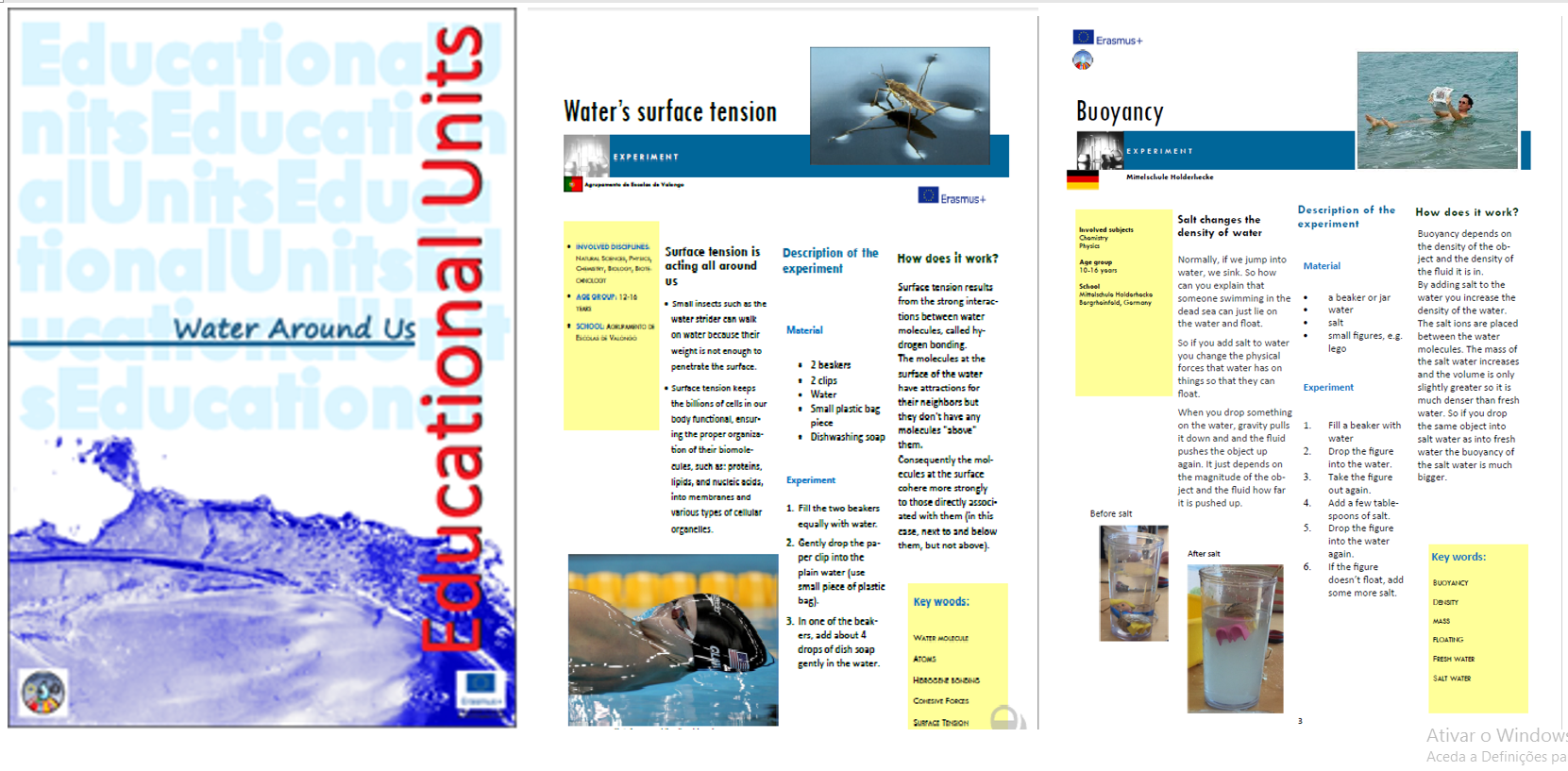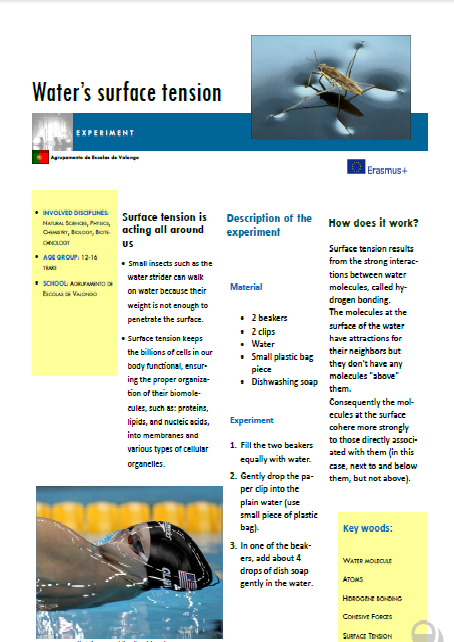4. EDUCATIONAL UNIT nº 1- Booklet Water proprieties
Right from the beginning, even before finishing the Erasmus+ application in spring of 2014, it was pretty clear that some kind of educational unit had to be one of our main products. Having picked „water“ as a topic, it seems quite obvious that you can´t deal with this theme without exploring its physical, chemical and biological properties.
All participating schools´ curricula imply the properties of water somewhere - almost at every grade. This booklet is intended to support every day teaching in physics, chemistry and related subjects at any school type and at almost every level. It is also a compilation of our common effort to install and practice crosscultural, interdisciplinary and student-oriented learning.
Students and teachers of the participating schools collected scientific phenomena regarding water´s properties. After that, they tried to come up with experiments which highlight these effects.
The aim was to compile a booklet with motivating scientific experiments to be used in science lessons across all school types. Educating and entertaining at the same time. Possibly being an example of good practice for other schools as well.
All experiments featured here were selected, tried out and chosen to become part of this compilation by students at the local schools. Each school elaborated 2-3 experiments in winter 2014/15. During our Learning Activity meetings in
Finland and Latvia, most experiments were performed again by 2-3 students of each country for the international assembly. Since English is the project language and none of the participants´ native tongue, extra effort was needed to conduct
and explain the experiments using proper English. Hence the English used is as simple as possible but as accurate as needed to be scientifically correct and still understood by the students.
The vast majority (unless otherwise stated) of all pictures was taken at our schools by participating students or teachers during experiments.
A three-column layout was used to keep the pages clear. Extra yellow boxes for involved subjects and key words also contribute to clarity. A spiral binding seemed to be useful for the intended use during lessons. The format DIN A 4 (21 cm x 29,7 cm) was chosen in favour of a smaller DIN A 5 for the same reasons of clarity and comprehensibility. It is also the format students use in their workbooks and folders so it´s easy to make photocopies.

Cover and pages example


EDUCATIONAL UNIT - WATER PROPRIETIES